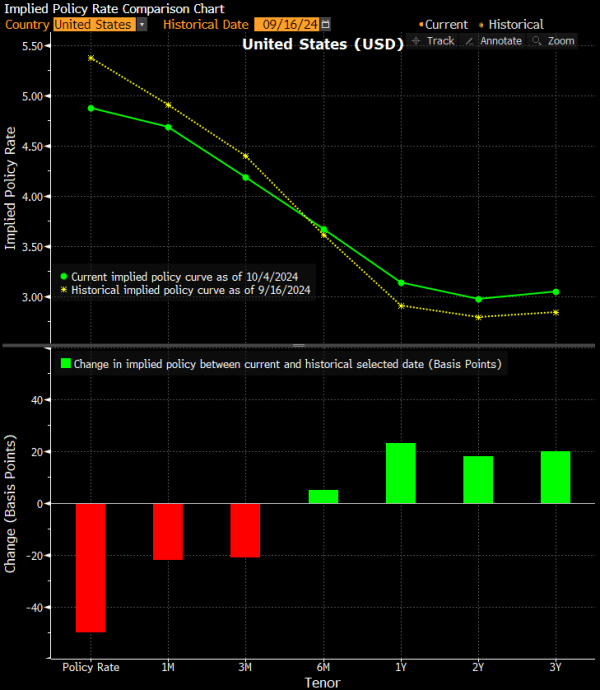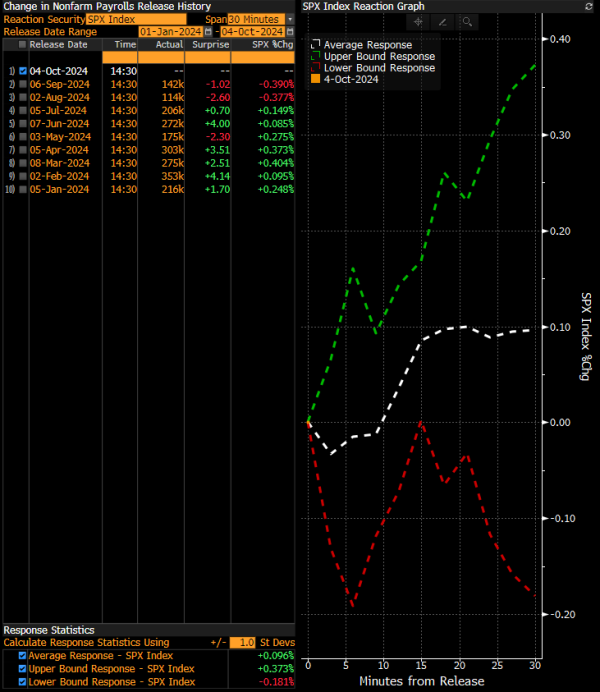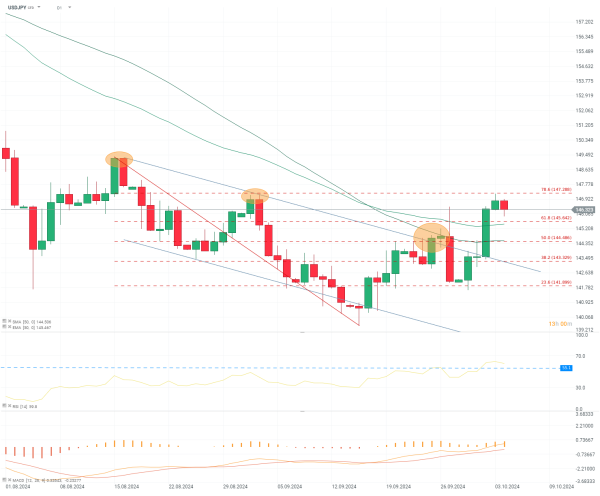USDJPY loses ground before NFP 📉
🚨Key US labor market report at 14:30
Today, investors will see the September US labor market report. At 14:30, we'll learn about the current state of the US economy and whether it justifies a sudden change in the Fed's interest rate policy.
What to expect from the data?
The market expects non-farm employment to increase by 150,000 people, compared to 142,000 in August. Moreover, the unemployment rate is expected to remain unchanged at 4.2%, and the annual average earnings growth is also expected to maintain August's level of 3.8%.
In the lead-up to this week's employment report, other employment indicators were mixed. For example, the number of job openings in the JOLTS sector increased to 8.04 million in August, up from 7.71 million in July and above the expected 7.69 million. This was the highest indicator since May and suggests that the US labor market is still tight. This data supports stronger-than-expected employment figures that may appear in September. On the other hand, the employment component of the ISM index for manufacturing fell sharply in September. The employment component of the ISM index for manufacturing has a historical relationship with the employment report. The September reading fell to 43.9 from 46.0, which is a deep drop and one of the lowest levels since 2020.

What could be the market reaction? It seems that data releases within +/- 1 standard deviation should not cause a long-lasting change in the rapid interest rate cuts already priced in by the market in the US, and any price movements will only be a short-term liquidity reaction. However, a reading above or below this range could change the established market foundation and thus bring about significant movements in most instruments. Source: Bloomberg Financial LP
The market expects rapid interest rate cuts
The Federal Reserve stated in recent communications and decisions that it's focusing on full employment as part of its mandate now that inflation is falling. That's why this week's data is crucial for the markets. Before the reading, the Fed funds market began pricing in the prospect of another 50 bp interest rate cut by the Federal Reserve at the November 7 meeting. There is currently a 32% chance of such a cut, down from over 54% last week. These expectations have also led to a sharpening of the implied rate curve for tenors above 6 months. So the market has begun to expect larger cuts at the beginning, with a moderation in pace at subsequent meetings.

Source: Bloomberg Financial LP

Employment data often causes volatility in markets, but its impact remains limited. Over the past year, the average reaction of the S&P 500 index to US employment data 30 minutes after its release was less than 0.0% growth. However, the largest increase was 0.37%, while downward reactions were milder, with the largest drop in the S&P 500 30 minutes after the employment data release being only -0.18%. Overall, this suggests that employment data alone has a mild impact on the main US blue-chip index.
USDJPY (D1 Interval)
The USDJPY currency pair broke out of the downward channel on Wednesday, rising at a record moment by 2.5% from the trend line. Resistance was only found at the 78.6% Fibonacci retracement at 147.243. At the beginning of September, this resistance also led to a decline that ended below the 140 level. The first support will be the 61.8% Fibonacci retracement level, which is at the 50-day EMA. Breaking this support could cause a quick descent to the 50% Fibonacci retracement, which coincides with the 50-day SMA. The 144.486 level also remained strong resistance during the upward movement. A return of the rate to the channel may mean a continuation of the downward trend. For now, RSI and MACD favor the bulls. In the case of RSI, only going below 55 could signal a trend change. For MACD, we still observe a strong bullish divergence.

Source: xStation